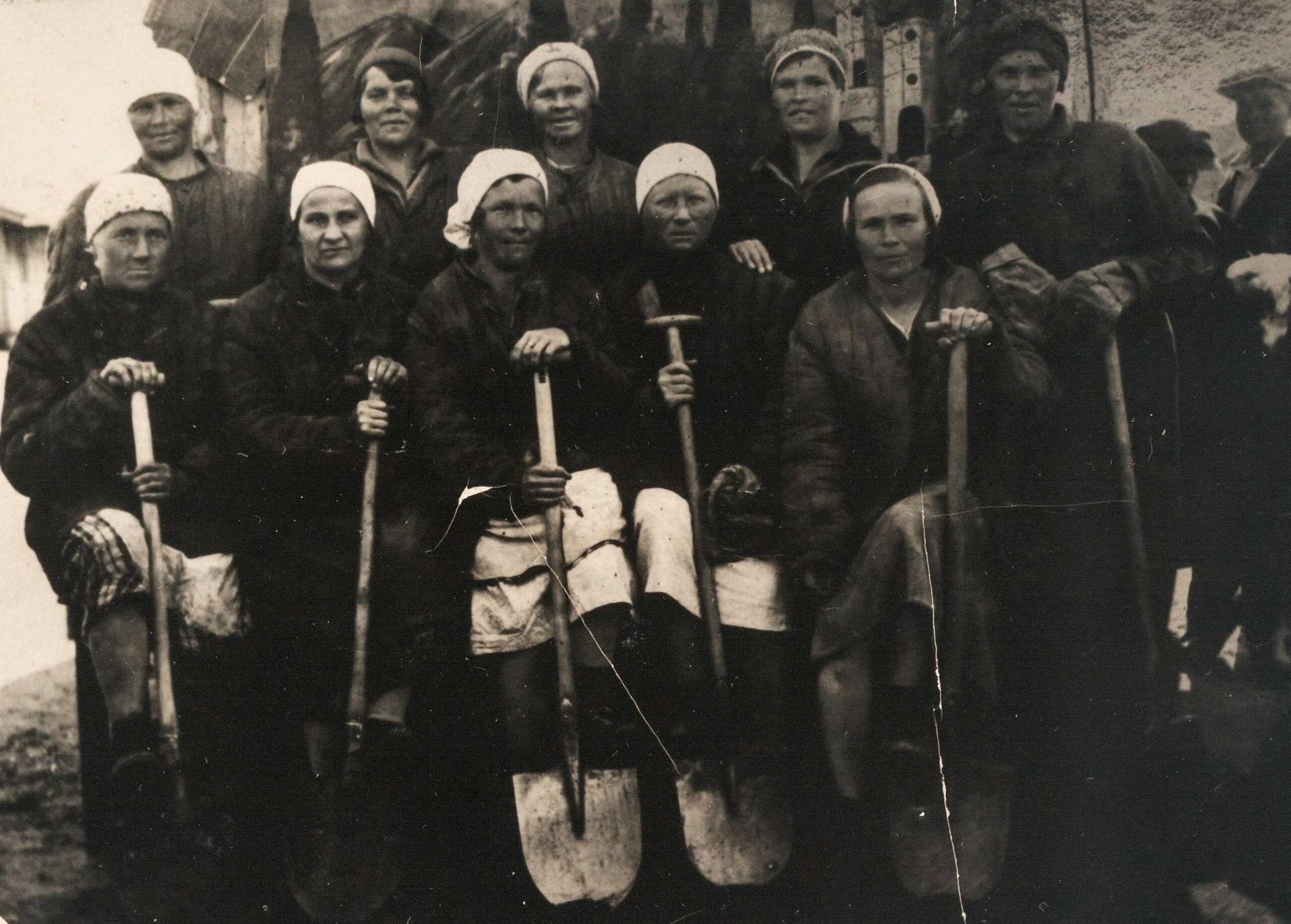Special collections
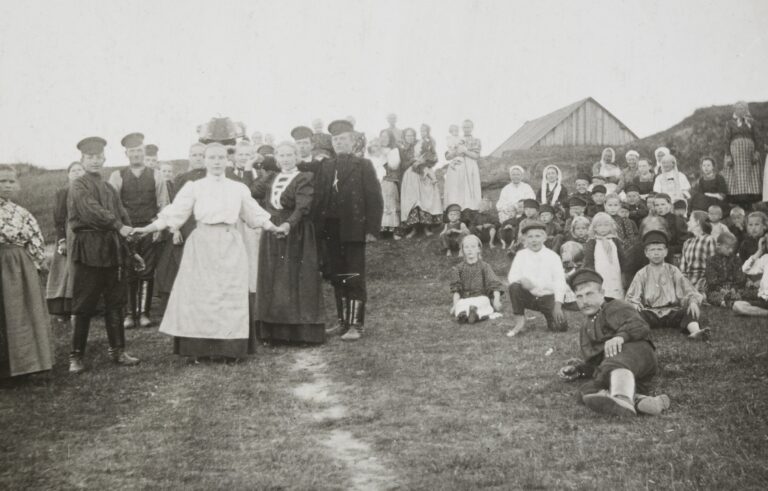
Ingria and Ingrian culture
Both of the SKS Archives collections include materials on Ingria.
Photo: Playground in Keltto, 1911. Samuli Paulaharju, SKS KRA.
The Traditional and Contemporary Culture Collection includes materials on Ingrian folklore recorded during fieldwork trips from the 1840s to the 1900s. Some of the oldest Ingrian traditions were used in creating the Kalevala compilation and were published in the Suomen kansan vanhat runot (the Ancient Songs of the Finnish People) compilation. In the 1990s, after the collapse of the Soviet Union, the SKS implemented the Inkerin identiteetti (Ingrian Identity) field campaign in which Ingrian Finns’ biographical oral histories were recorded and locals were interviewed about their lives and the societal situation in Ingria.
The archives of private individuals with an Ingrian background, along with researchers familiar with Ingrian culture, have been acquired by the Collection on Literature and Cultural History. In addition, oral history and archive materials have been actively expanded through two projects: the Inkerin identiteetti (Ingrian Identity) fieldwork project in the 1990s and the Inkeri ja inkeriläisyys – muistot talteen, arkistot haltuun (The Ingria and Ingrians – recording histories, preserving memories, 2018–2020) project.
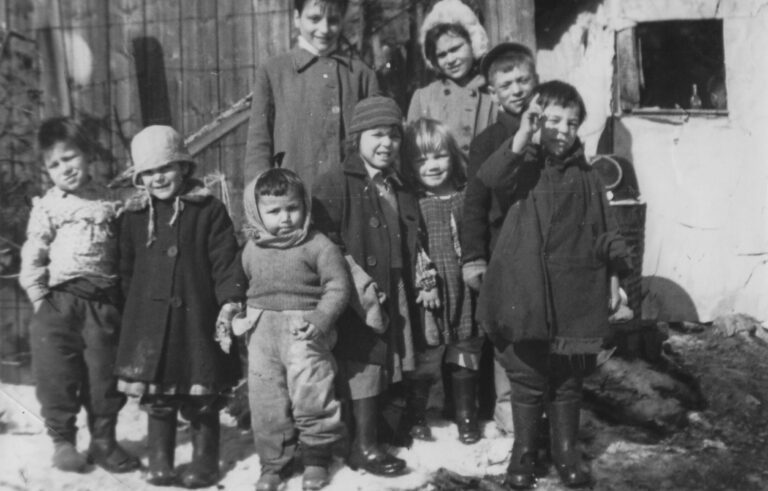
Archive of Romani people in Finland
Suomen romanien arkisto − Finitiko kaalengo arkiivos is a cultural heritage collection on the Romani people jointly between the Finnish Literature Society and the Finnish National Archive. The collection was developed by the Romanien kulttuuriperintö: arkistointi, arvostus ja tutkimus (Romani Cultural Heritage: Archival, Valuation, and Research) project (2016–2018).
Photo: A group of Roma children in front of a building. Mäkkylä, Espoo, 1954 or 1955. SKS KRA.
The Romani materials of the SKS are comprised of folklore, oral history, and cultural history materials as well as archives on persons and associations. What is common between the different materials is that they provide a picture of the Romani people in Finland, as told by the Romani themselves and by representatives of the general population.
Since the 1960s, the SKS has collected information on Romani traditions and oral history. These materials have been continuously expanded by material donations from researchers, heritage collectors, and Romani actors. Before the 1960s, materials on Romani culture were only occasionally added to the Archives. The collection includes approximately 600 hours of sound recordings, hundreds of photographs, and tens of shelf meters of heritage material in text format, as well as the archives of associations and individuals. Access to these materials, as always, has restrictions on their use. A permit for the use of restricted materials can be applied for in writing.
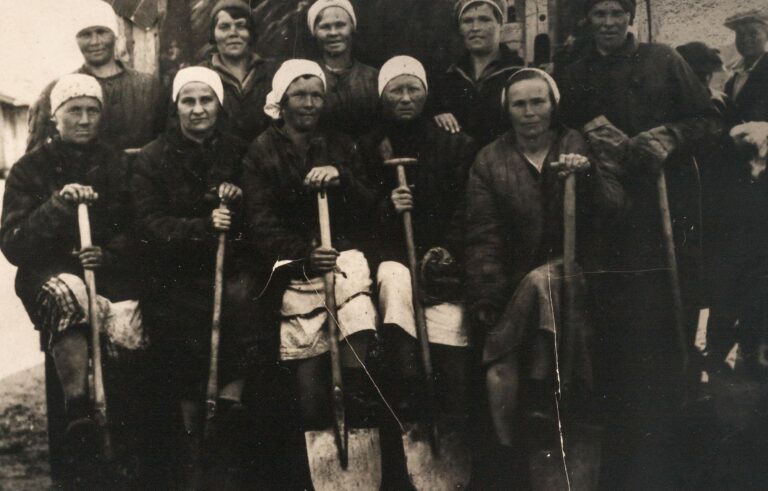
Memories of Stalin’s Great Purge
In spring 2020, the SKS arranged an ethnographic questionnaire on Stalin’s Great Purge (Stalinin vainojen muistot -keruu) in which 134 respondents from Finland, the United States, Russia, and Sweden participated. The questionnaire received over 1100 pages of memories and various related materials, such as documents, newspaper clippings, and letters written in various languages. A total of 144 images were received in connection with the questionnaire.
Photo: Finns at the Svirstroi labor camp in 1934, SKS KRA.
The collection materials focus on the biographies of the victims of Stalin’s Great Purge: those who were lost, those who died, and those who survived. The responses shed light on the fate of Ingrians, Murmansk Finns, and Finns living in Saint Petersburg as well as Finns who left from Finland, Canada, and the United States to the Soviet Union. The writers depict a background of moving to the Soviet Union, life in the Soviet Union before the purges, and events during and after the purges.
This collection was continued in the Memories of Stalin’s Great Purge project (Stalinin vainojen muistot -hanke, 2021–2022) with interviews with the descendants of Finns and Karelians who had experienced Stalin’s Great Purge. The Great Purge is a little-known part of our national history, and recording the stories of its victims and the experiences of their descendants is considered important. Their memories and experiences have not previously been collected as broadly. A total of 105 individuals who lived in Finland, Sweden, and the United States were interviewed in Finnish, Sweden, Russian, and English. Remote interviews enabled the interviews to be conducted in foreign countries.
During the project, the SKS Archives received approximately 60 different donations of materials, including texts, images, and audio and video materials. The majority of the materials have been preserved in the Archives in a digital format, with the source materials returned to their owners after their loan.
Sámi languages and Lapland materials
Both collections in the Archives include materials related to Sámi culture, the Sámi peoples, and the regions inhabited by the Sámi peoples.
The majority of the material dates from the 1800s to the early 1900s. The catalog of materials on Sámi culture and Lapland in the Literature and Cultural History Collection was compiled in autumn 2013 by Rosa-Máren Magga. This catalog was made from the viewpoint of Sámi research, and it aims to make the materials visible and available to researchers. The Literature and Cultural History Collection’s list of materials on Lapland and the Sámi cultures is available in the reading room of the SKS Archives.
The Archives’ Traditional and Contemporary Culture Collection includes materials related to Sámi culture and Lapland in the form of manuscripts, sound recordings, and photographs. The northern part of Finland and beyond its borders on the Swedish, Norwegian, and Russian sides have been part of the target regions for the fieldwork conducted by the Archives’ personnel. The informants for the materials included both Sámi people and other northern inhabitants. Known documenters of traditions include the great collectors of folk tradition: Samuli and Jenny Paulaharju, the Sámi writer Pedar Jalvi, and the ethnomusicologists Armas Launis and A. O Väisänen.
The Sámi Archives is currently responsible for archiving Sámi culture. It is part of the Finnish National Archive and is located in the Sámi Cultural Center Sajos. The Saami Culture Archiveoperates at the University of Oulu’s Giellagas Institute.
Do not hesitate to ask more about the materials.
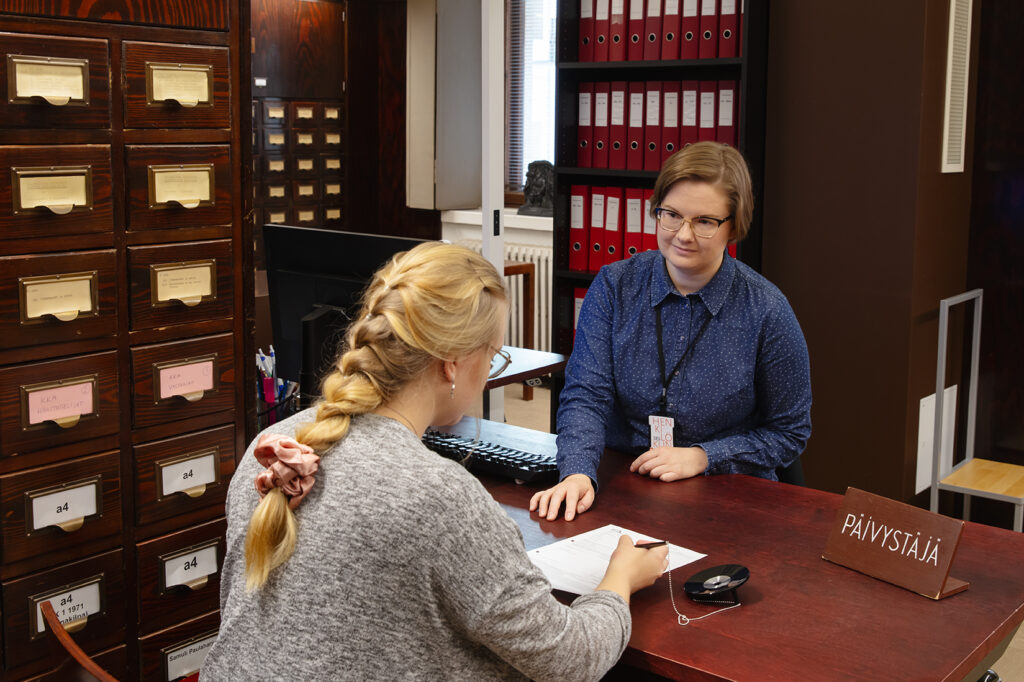
Background image: Finns at the Svirstroi labor camp in 1934, SKS KRA.


